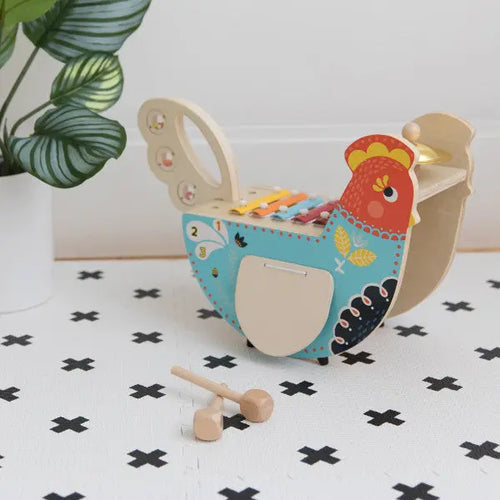Photo Credit: @arekeworkuphotography
As a new parent or soon to be mom/dad, you have probably heard the terms, fine motor and gross motor development. These developmental skills are often referenced in magazine articles and even on toy packaging. But for those of you who hear the terms "fine and small motor, large or gross motor development" and find yourself wondering: ‘what’s the difference’? Then wonder no more!
Photo Credit: @emmaadelebf
According to the Encyclopedia of Children’s Health, “Motor skills are actions that involve the movement of muscles in the body. They are divided into two groups: gross motor skills and fine motor skills.” Gross or large motor skills include any large movements that are made by arms, legs, feet or even the body as a whole. While fine or small motor skills are smaller actions that require the use of muscle groups like the hands, wrists, toes, fingers, lips and tongue. Usually both types of motor skills develop simultaneously, since so many skills require the combined effort of both small and large muscle groups.
Photo Credit: @babyledeverythingg
Fine/Small Motor Activities
Just like large motor skills, small motor skills continue to change and evolve into new skills throughout the stages of development. As an infant, fine motor skills can include grasping objects or using the lips and tongue to taste various things. As the child grows, new skills get added to this category of development through actions like: holding a fork or learning to use a pencil or scissors. Small and large motor skill development go hand-in-hand. Through each new skill children continue to master developmental milestones. Continued practice through play and other activities only encourages and supports a child’s ability to control each muscle group. Now that you know more about the types of motor development, here are some ways to support your child through play as they develop their motor skills.
Photo Credit: @ocean_akin
Gross/Large Motor Activities
Activities that encourage gross motor or large motor development continue to change as the child grows and develops. Infant and baby activities that would be considered a gross motor skill include: rolling over, sitting up or crawling. As the child grows, additional skills continue to be added to the gross motor category, such as: walking, running or jumping.
Toys for fostering Gross/Large Motor Skills













The Story Behind “Big Blue Whale”
Puppet Playtime